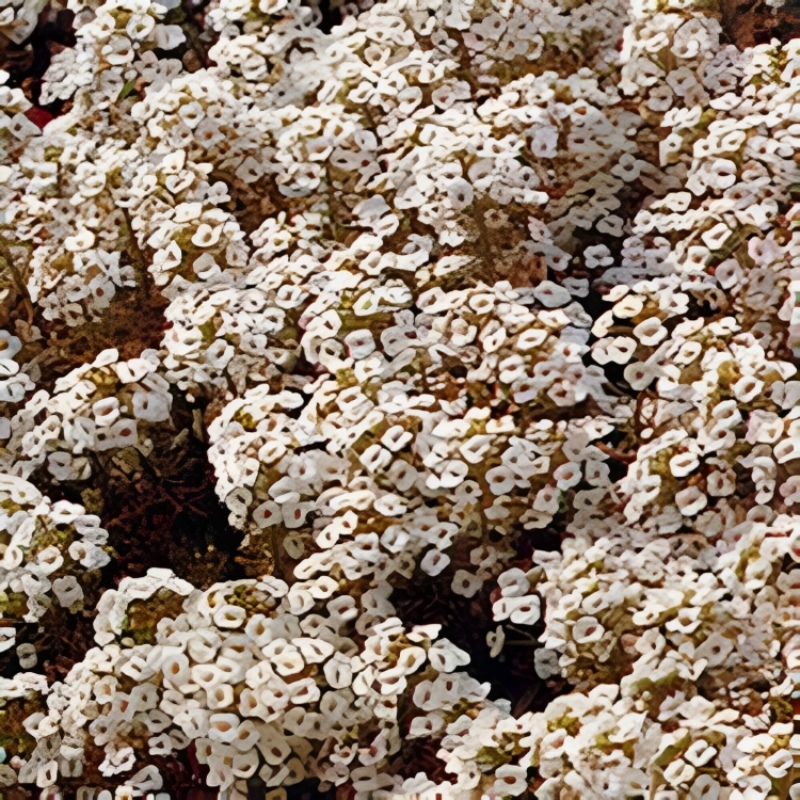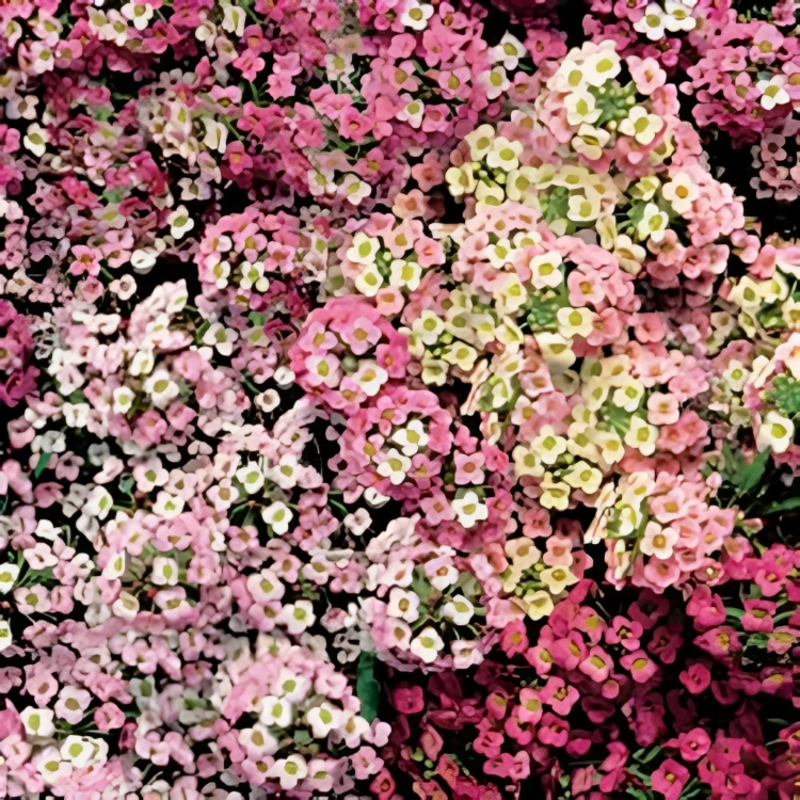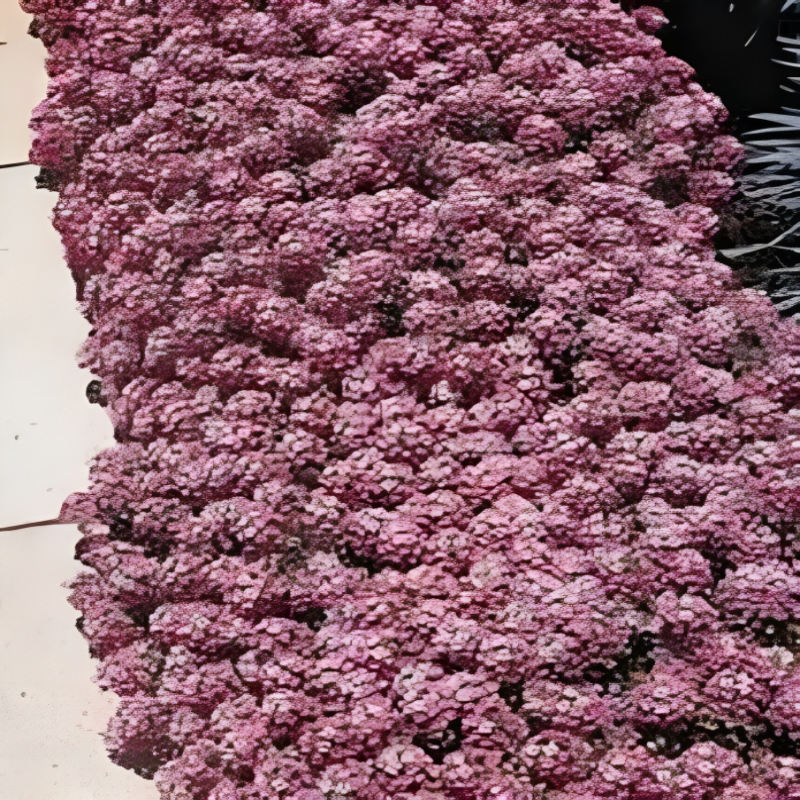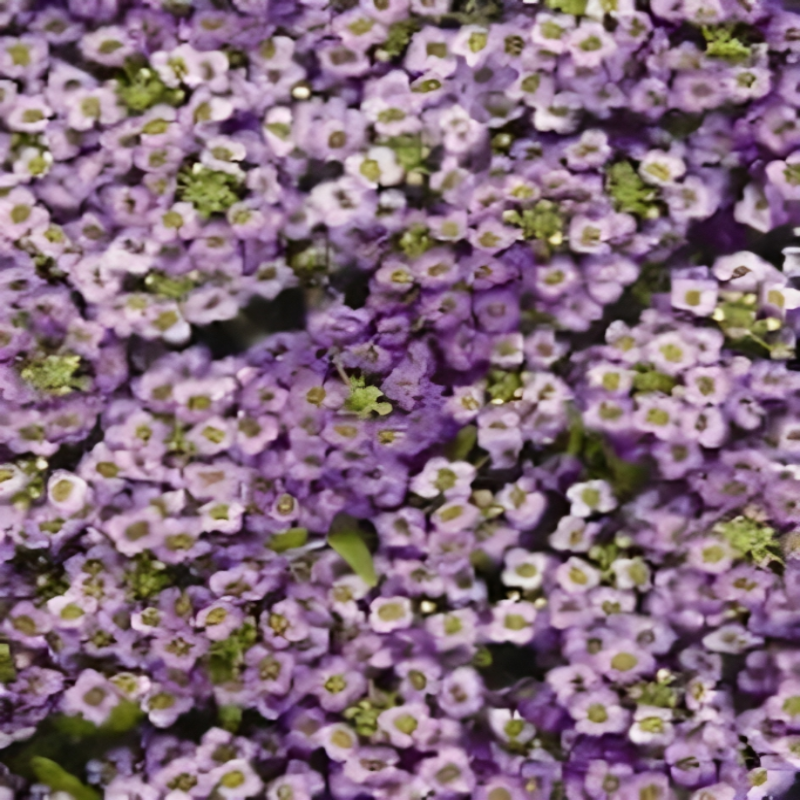- Historical context: Alyssum, also known as sweet alyssum, has been cultivated for centuries for its delicate flowers and pleasant fragrance.
- Geographical origination: Alyssum is native to the Mediterranean region, including Southern Europe, Northern Africa, and parts of Asia.
- Relevant cultural significance: Alyssum has been used in traditional gardens and landscapes for its ornamental value and ability to attract beneficial insects.
- Time period of discovery: The exact time period of discovery is not well-documented, but it has been known and cultivated since ancient times.
- Original habitat: Alyssum typically grows in rocky, coastal areas and open fields in its native regions.
- Notable historical uses: Historically, alyssum was believed to have medicinal properties and was used in folk medicine to treat various ailments.
- Ideal temperature range: Alyssum thrives in cool to moderate temperatures, ideally between 55°F to 75°F (13°C to 24°C).
- Soil type: It prefers well-drained, moderately fertile soil with a pH range of 6.0 to 7.5.
- Sunlight requirements: Alyssum grows best in full sun to partial shade.
- Watering needs: Regular watering is essential, especially during dry periods, but avoid waterlogging the soil.
- Planting season: Plant alyssum seeds in early spring after the last frost or in late summer for a fall bloom.
- Germination time: Alyssum seeds typically germinate within 7 to 14 days.
- Growth cycle duration: Alyssum is an annual plant, completing its life cycle within one growing season.
- Common pests and diseases: Alyssum can be affected by aphids, whiteflies, and downy mildew. Regular monitoring and appropriate treatments can help manage these issues.
- Companion planting advice: Alyssum is an excellent companion plant for vegetables and other flowers, as it attracts pollinators and beneficial insects.
- Common challenges and solutions: Alyssum can suffer from root rot if overwatered. Ensure proper drainage and avoid excessive watering to prevent this issue.
- Nutritional values: Alyssum is not typically consumed for its nutritional value.
- Health benefits: While not commonly used in modern medicine, alyssum was historically believed to have anti-inflammatory and diuretic properties.
- Culinary uses: Alyssum is not commonly used in culinary applications.
- Medicinal uses: In traditional medicine, alyssum was used to treat colds, coughs, and abdominal pain, although these uses are not widely supported by modern scientific evidence.
- Other unique advantages: Alyssum is highly valued for its ornamental beauty, sweet fragrance, and ability to attract beneficial insects such as bees and butterflies. It is also used as a ground cover in gardens and landscapes.










